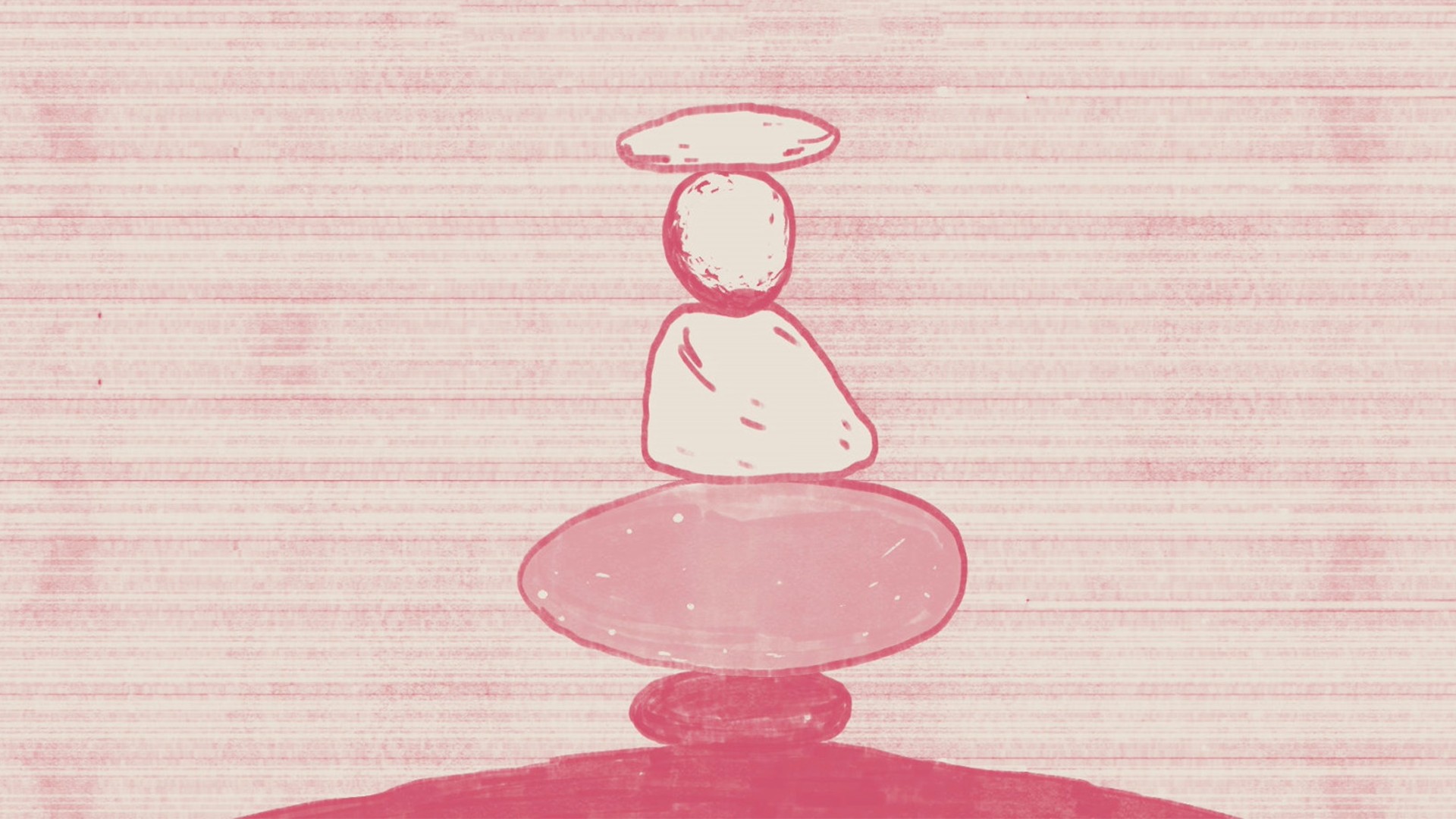Martin Dimitrov / Getty
In the nebulous world that is American spirituality, it can be hard to trace a practice back to its origin. So many traditions and rituals—yoga, Sufism, Kabbalah—have made loop-de-loops across the world, morphing and twisting along the way before eventually landing in the digital folds of our app stores.The concept of mindfulness is, perhaps, the latest and most pervasive example. It has been largely stripped of its roots, which predominantly point back to the satipatthana sutta, a Buddhist discourse that outlines the physical and mental practice of mindfulness meditation. The term is echoed throughout yoga classes, mental health clinics, school classrooms, magazines at Whole Foods, and apps—multiple meditation apps like Headspace and Calm, downloaded millions of times—without a mention of tradition or text.Herein lies one of our seminal dilemmas in the world of self-betterment. We want to absorb the teachings that can make us stronger, healthier, and more fit for an increasingly crazy world. But to make them fit neatly into the world of wellness apps, they have been plucked out of their cultures and whitewashed beyond the point of recognition. This leaves us with one more form of commodified spirituality that is likely, like yoga, to alienate people of color.“I think there’s a lot of discussion these days about the commercialization of practices like yoga and mindfulness,” says Elaine Yuen, a professor of religion who researches both Buddhism and mindfulness at Naropa University in Boulder, Colorado. “We still need to inquire what is a Buddhist practice in the West.” Yuen, who has also taught mindfulness in clinical settings, says that meditation apps can serve as an entry point into meditation practice, but they’re not often designed with spirituality in mind. Instead, many of them are focused on Western ideas of efficiency: meditating as means of increasing focus, productivity, or maintaining physical health.
More from Tonic:
The apps, on the surface, are all seamless in their interface, and offer multiple types of meditation. Calm—co-founded by tech entrepreneur Acton Smith and valued at $250 million—urges people to choose their motivation: reducing anxiety, or getting better sleep. Headspace, co-founded by erstwhile Buddhist monk Andy Puddicombe, has approximately 30 million users, also allows users to track their “Mindful Minutes” on the Apple health app.Kevin Rose, the tech entrepreneur who co-founded companies like Digg and Milk, launched his meditation app, Oak, last year. He consulted some experienced meditation practitioners that he knew and a clinical psychologist at Princeton University, Patricia Carrington, to create the programming. Then his team cultivated courses around different types of meditations, like mindfulness, lovingkindness (another meditation derived out of Buddhism), and mantra meditation (which has roots in Hinduism), by testing them on a community of users and incorporating their feedback along the way. “We would go back and tweak and make hundreds of edits,” he says.Rose himself has studied various Eastern spiritual practices like vipassana and zen meditation. While living in Hayes Valley—an affluent San Francisco neighborhood rife with yoga and meditation centers—he says he embraced the cultures that birthed these practices. But when it came to making his app, he wanted to avoid religion. “We will get into more traditional language as we go further along,” he says. “But I don’t want to scare people away.”This is, certainly, a potential risk with including spirituality or religious terminology in a product. In the US, younger generations tend to be less religious, with only 50 percent reportedly believing in god, and 23 percent saying they subscribe to no particular religion or practice, according to a Pew survey.But divorcing mindfulness practices from their origins can be a form of cultural appropriation, i.e., the adoption of elements from a minority culture by a dominant culture, says Kendra Surmitis, a professor of counseling on the faculty of Prescott College. She adds that most individuals probably know that there is some connection between Buddhism and mindfulness, but that the knowledge can often be scant, and that can create a gap in awareness.In her own counseling practice, she acknowledges a client’s own spiritual practice (or lack thereof), but she also educates people on the roots of what she is espousing. “I would encourage practitioners to request the mentorship or support of someone who is most familiar with the background of the practice, such as a Buddhist monastic,” she says, “to assist them in truly understanding the history of the practice, its spiritual relevance, and how this ought to be communicated to the larger population.”Acknowledging the cultural context or spiritual tradition of a meditation practice is not just about giving credit where it’s due. Silicon Valley, where most of the apps proliferate, is notorious for creating technology by and for white Americans. It doesn't take a systematic review to conclude that most popular meditation apps in the app store are made by white men, and some white women, usually with some kind of background in tech.Though some of the apps are free, the identity of the creators can impact who has access to the practice of mindfulness meditation. Everything from the voices and languages available to the models and marketing affect who is drawn to a product. There is little data on the demographics on who is using meditation apps, but If the yoga industry could be used as a proxy—given its similar trajectory from the East to West—the majority of practitioners are white and college-educated, with an income higher than the national average. “There are few African American teachers teaching meditation, there are few people of color teaching,” Yuen says. “I feel that the development arc has a long way to go.”The onus is on the people purveying mindfulness to acknowledge their own privilege, Surmitis says. And that is true for how it is taught in mental health circles, too. “It is critical for psychotherapists to understand that the distribution of societal power more broadly will inform the distribution of power…between client and therapist,” she adds. She recommends that therapists consult experts from the tradition, and explicitly inform clients where the type of meditation is from.For meditation and mindfulness apps, this doesn’t need to be a zero sum game. Christopher Plowman co-founded Insight Timer, a crowd-sourced meditation app with 4.7 million users. On this app, anyone can upload a meditation, and people can create groups or connect with other users to share their meditation experiences. As a result, there are meditations from various traditions (including Christianity, Islam and types of mysticism) and 55 languages, and 7,000 discussion groups, including some created by and for black women who want to meditate together. “What Calm and Headspace do is they intentionally strip out religion and origin in their teachings, mostly for commercial reasons,” Plowman says. “But for us, separating spirituality, I think, ruins meditation.” (When contacted for an interview, Calm declined an interview and Headspace did not respond.)This model doesn’t allow for much quality control—the sound and structure is not always smooth and edited like other apps, and it’s possible for even amateur meditators to create their own guided meditations. It does, however, make some room for customization and community, and that in itself could help bridge some of the power and access issues otherwise plaguing Western spirituality. “We don't preach, we don’t govern, we don’t talk, really,” Plowman says “We put it out there, and people sort of bump into this stuff.”In the end, though, Yuen says it’s not so much a question of whether or not it’s okay to use a mindfulness app, but rather how far it will get you in your practice, and who it can reach.“One of the fundamental teachings of Buddhism is there’s no constant thing called the self, we’re not as solid as we think we are,” she says. “That kind of mindfulness is helpful, and I’ve taught it as a means of stress reduction. But it’s not quite Buddhism.”Sign up for our newsletter to get the best of Tonic delivered to your inbox.
Advertisement
More from Tonic:

The apps, on the surface, are all seamless in their interface, and offer multiple types of meditation. Calm—co-founded by tech entrepreneur Acton Smith and valued at $250 million—urges people to choose their motivation: reducing anxiety, or getting better sleep. Headspace, co-founded by erstwhile Buddhist monk Andy Puddicombe, has approximately 30 million users, also allows users to track their “Mindful Minutes” on the Apple health app.
Advertisement
Advertisement
Advertisement
